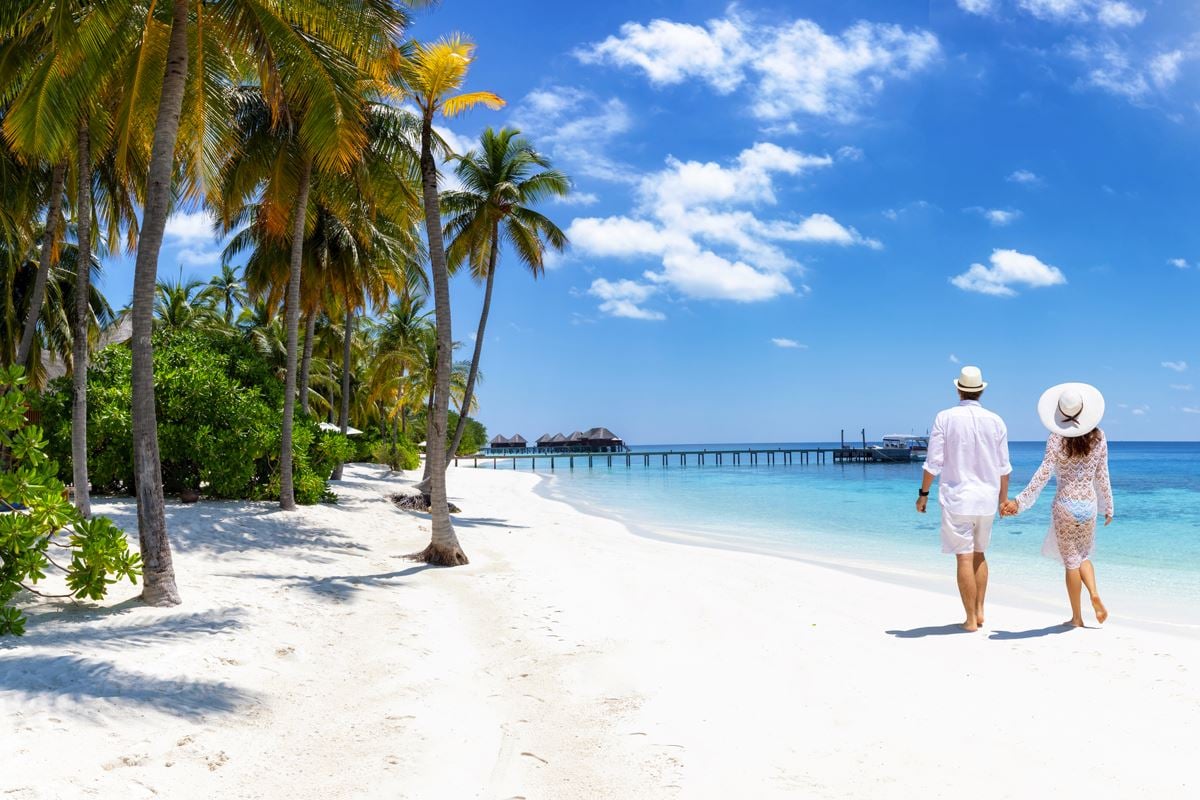Best retirement vacations represent a significant milestone, a chance to finally unwind and explore the world on your terms. This journey isn’t just about ticking off destinations; it’s about crafting an experience that perfectly aligns with your budget, health, interests, and preferred travel style. Whether you envision serene relaxation on a tropical beach, thrilling adventures in the mountains, or enriching cultural immersion in a historic city, the possibilities are endless. This guide will help you navigate the planning process, ensuring your retirement vacation is as memorable and fulfilling as it should be.
We’ll delve into various aspects of planning the ideal retirement getaway, from selecting the perfect destination and choosing engaging activities to managing your budget effectively and prioritizing health and safety. We’ll also explore sustainable travel options, allowing you to enjoy your trip while minimizing your environmental impact. Ultimately, the goal is to empower you to create a truly personalized and unforgettable retirement vacation.
Defining “Best Retirement Vacations”
Defining the “best” retirement vacation is inherently subjective, varying greatly depending on individual preferences, financial resources, and physical capabilities. A perfect getaway for one retiree might be utterly unsuitable for another. This section explores the multifaceted nature of planning a fulfilling retirement vacation, considering crucial factors to help you tailor your ideal trip.
The concept of a “best” retirement vacation encompasses a harmonious blend of several key elements. Budgetary constraints naturally play a significant role, influencing the choice of destination, accommodation, and activities. Health considerations are paramount; a physically demanding trek through the Himalayas is unsuitable for someone with limited mobility, while a relaxing cruise might be ideal. Personal interests, whether it’s exploring ancient ruins, indulging in culinary experiences, or simply unwinding on a pristine beach, are crucial in shaping the vacation’s character. Finally, travel style – from independent backpacking to all-inclusive resort stays – impacts the overall experience.
Diverse Retiree Preferences for Vacations
Retirees exhibit a wide range of preferences regarding their vacations. Some seek adventurous escapades, pushing their physical and mental limits. Others prioritize relaxation and rejuvenation, opting for tranquil settings and leisurely activities. Many find fulfillment in cultural immersion, exploring new cultures and traditions. A significant portion prefers comfortable and familiar surroundings, opting for destinations with established tourist infrastructure and readily available services. Others might prioritize visiting family and friends, combining personal connections with exploration.
Comparison of Retirement Vacation Types
The following table compares different types of retirement vacations, considering destination examples, typical activities, estimated costs, and suitability for varying health conditions. Cost estimates are broad generalizations and can vary significantly based on factors such as travel time of year and specific choices within a given category. Health suitability is also a general guideline; individual needs should always be consulted with a physician before undertaking any travel.
| Destination | Activity | Cost Estimate (per person, 7 days) | Suitability for Different Health Conditions |
|---|---|---|---|
| Costa Rica | Zip-lining, rainforest hikes, wildlife spotting | $2000 – $5000 | Suitable for those with good mobility and stamina. Not suitable for those with heart conditions or respiratory issues without proper medical clearance. |
| Hawaii | Relaxing on beaches, swimming, snorkeling, gentle hikes | $1500 – $4000 | Generally suitable for most health conditions, but those with mobility issues might find some activities challenging. |
| Italy | Visiting historical sites, enjoying culinary experiences, leisurely walks | $2500 – $6000 | Suitable for most health conditions, but those with mobility issues might find extensive walking challenging. Consider accessible transportation options. |
| Alaska Cruise | Cruising, sightseeing, wildlife viewing (from ship) | $3000 – $8000 | Generally suitable for most health conditions, provided the cruise line offers accessible facilities. |
Popular Retirement Vacation Destinations
Choosing the perfect retirement vacation destination requires careful consideration of individual preferences and needs. Factors such as climate, accessibility, cost of living, and available activities all play a significant role in determining the ideal location. This section explores five popular destinations, highlighting their unique appeal for retirees.
Five Popular Retirement Vacation Destinations
Five destinations consistently rank highly among retirees seeking fulfilling and enjoyable vacations: Santa Fe, New Mexico; Charleston, South Carolina; San Diego, California; Sedona, Arizona; and Cusco, Peru. Each offers a distinctive blend of cultural experiences, natural beauty, and amenities tailored to the needs of older travelers.
Detailed Examination of Each Destination
- Santa Fe, New Mexico: Known for its rich Southwestern culture, art scene, and stunning high-desert landscapes. Retirees enjoy the mild climate, numerous art galleries, and historic architecture. Accessibility is generally good, with many accommodations catering to seniors. Costs vary, but can be moderate to high depending on accommodation choices. Activities include exploring ancient pueblos, visiting museums, and hiking scenic trails.
- Charleston, South Carolina: A charming city with a rich history, beautiful architecture, and a vibrant culinary scene. The city offers a slower pace of life, making it ideal for relaxation. Accessibility is generally good, with many historic sites offering wheelchair access. Costs can range from moderate to high, depending on accommodation and dining choices. Activities include historical walking tours, carriage rides, and exploring the city’s many parks and gardens.
- San Diego, California: Offers a sunny climate, beautiful beaches, and a relaxed atmosphere. The city boasts numerous attractions, including Balboa Park and the San Diego Zoo. Accessibility is generally good, with many attractions offering wheelchair access and other accommodations for seniors. Costs can be high, particularly for accommodation and dining. Activities include enjoying the beaches, visiting museums and attractions, and exploring the city’s diverse neighborhoods.
- Sedona, Arizona: Famous for its stunning red rock formations, spiritual energy, and numerous hiking trails. The area offers a tranquil setting and opportunities for wellness and rejuvenation. Accessibility can be challenging in some areas due to the rugged terrain. Costs can range from moderate to high, depending on accommodation and activity choices. Activities include hiking, exploring vortex sites, and enjoying the area’s natural beauty.
- Cusco, Peru: Offers a unique cultural experience, with access to Machu Picchu and other Inca ruins. The city itself is rich in history and offers a glimpse into Peruvian culture. Accessibility can be challenging due to the altitude and some uneven terrain. Costs are generally moderate, but can vary depending on accommodation and tour choices. Activities include exploring Inca ruins, visiting local markets, and experiencing Peruvian cuisine.
Comparison of Destinations: Accessibility, Cost, and Activities
The five destinations present a diverse range of options for retirees. Santa Fe and Charleston offer a balance of culture, history, and accessibility at moderate to high costs. San Diego provides a more modern experience with beaches and attractions, but at a higher cost. Sedona offers a unique spiritual and natural experience, but with potential accessibility challenges. Cusco provides a culturally rich adventure, but with considerations for altitude and accessibility.
Best Time to Visit
- Santa Fe: Spring (April-May) and Fall (September-October) offer pleasant weather and fewer crowds.
- Charleston: Spring (April-May) and Fall (September-October) provide comfortable temperatures and fewer tourists.
- San Diego: Year-round destination, but summer (June-August) can be crowded and hot.
- Sedona: Spring (April-May) and Fall (September-October) are ideal for hiking and pleasant weather.
- Cusco: Dry season (May-September) offers the best weather for exploring the ruins and surrounding areas.
Activities and Experiences for Retirees
Retirement offers a fantastic opportunity to explore new interests and enjoy experiences previously put on hold. Choosing the right activities is key to a fulfilling and enjoyable retirement vacation, and the best options will vary greatly depending on individual preferences, physical capabilities, and budget. This section outlines various activities categorized for easier planning, ensuring a memorable retirement getaway tailored to your specific needs.
Active Retirement Activities
Active retirees can choose from a wide range of invigorating experiences. These activities promote physical well-being while allowing exploration and enjoyment of the destination.
- Hiking and Walking Tours: Many destinations offer scenic trails suitable for various fitness levels. Guided walking tours provide historical context and local insights, enhancing the experience. Imagine strolling along the picturesque Cinque Terre trails in Italy, taking in breathtaking coastal views while learning about the region’s rich history and culture.
- Cycling Tours: Explore charming towns and countryside landscapes at your own pace with a leisurely cycling tour. Consider a tour through the vineyards of Tuscany, Italy, or the Dutch countryside, enjoying the scenery and local produce along the way.
- Water Activities: From kayaking and paddleboarding to swimming and snorkeling, water activities offer a refreshing and enjoyable way to stay active. Picture yourself kayaking through a tranquil lagoon in Belize, surrounded by vibrant coral reefs and diverse marine life.
Relaxing Retirement Activities
Retirement is also a time for rejuvenation and relaxation. These activities prioritize rest and recuperation, offering a peaceful escape from daily routines.
- Spa Treatments and Wellness Retreats: Indulge in pampering spa treatments, yoga sessions, and meditation retreats to promote relaxation and well-being. Imagine unwinding with a traditional Balinese massage overlooking the ocean, followed by a rejuvenating yoga session on a secluded beach.
- Beach Relaxation and Sunbathing: Simply unwinding on a beautiful beach, soaking up the sun, and reading a good book can be incredibly restorative. Picture yourself lounging on the white sands of the Maldives, the gentle ocean breeze carrying the sounds of the waves.
- Cooking Classes and Wine Tastings: Immerse yourself in local culinary traditions with hands-on cooking classes and wine tastings. Imagine learning to prepare authentic Italian pasta in a charming Tuscan villa, followed by a delightful wine tasting session with local producers.
Cultural and Enrichment Activities
Retirement provides the perfect opportunity to delve into cultural experiences and expand your knowledge. These activities stimulate the mind and offer enriching experiences.
- Museum Visits and Historical Site Tours: Explore historical landmarks, art museums, and cultural centers to delve into local history and art. Imagine exploring the ancient ruins of Machu Picchu in Peru, or the Louvre Museum in Paris, surrounded by masterpieces of art and history.
- Theatrical Performances and Concerts: Attend local theatrical performances, concerts, and operas to enjoy the arts and immerse yourself in the local culture. Picture yourself attending a captivating opera performance in Vienna, Austria, or a Broadway show in New York City.
- Literary Tours and Book Clubs: For book lovers, literary tours and book clubs offer opportunities to connect with fellow enthusiasts and explore literary landscapes. Imagine joining a literary tour in Dublin, Ireland, retracing the footsteps of famous authors and exploring the city’s rich literary heritage.
Budget and Planning Considerations
Planning a retirement vacation requires careful consideration of various cost factors to ensure a memorable and financially responsible trip. Failing to budget adequately can lead to unexpected expenses and compromise the enjoyment of your well-deserved break. This section outlines key cost components and provides practical strategies for budgeting and saving.
Cost Factors in Retirement Vacation Planning
Several key factors contribute to the overall cost of a retirement vacation. These include travel expenses (flights, trains, or car rentals), accommodation costs (hotels, resorts, or vacation rentals), activity fees (tours, excursions, and entertainment), and food and beverage expenses (dining out, groceries, and drinks). The specific cost of each will vary greatly depending on your chosen destination, travel style, and the length of your stay. For instance, a luxury cruise to the Caribbean will naturally command a much higher price tag than a road trip camping across the national parks.
Budgeting and Saving Tips for Retirement Vacations
Creating a realistic budget is crucial. Begin by determining your total available funds for the vacation. Then, allocate a percentage to each cost category (travel, accommodation, activities, food). Consider using budgeting apps or spreadsheets to track expenses and monitor progress towards your savings goal. Start saving early and consistently, even small amounts over time can accumulate significantly. Explore flexible travel dates and consider off-season travel to potentially lower costs. Look for discounts and deals on flights, accommodation, and activities by booking in advance or using travel comparison websites.
Sample Budget Breakdown
| Category | Estimated Cost | Tips for Saving | Alternatives |
|---|---|---|---|
| Flights/Transportation | $1000 | Book flights well in advance, consider budget airlines, utilize flight comparison websites, travel during off-peak seasons. | Train travel, bus travel, road trip (if feasible). |
| Accommodation (10 nights) | $1500 | Consider vacation rentals (Airbnb, VRBO) instead of hotels, look for deals and discounts on hotel booking sites, opt for simpler accommodations. | Camping, staying with friends or family. |
| Activities & Excursions | $500 | Prioritize free activities like hiking or exploring local parks, look for free or discounted admission days at attractions, take advantage of city passes. | Free walking tours, self-guided exploration. |
| Food & Drink | $750 | Cook some meals yourself, utilize grocery stores instead of restaurants for all meals, take advantage of happy hour specials, pack snacks and drinks. | Picnics, street food, local markets. |
| Miscellaneous (Souvenirs, incidentals) | $250 | Set a daily spending limit for souvenirs, avoid impulse purchases, track spending diligently. | Limit souvenir purchases, focus on experiences rather than material items. |
| Total Estimated Cost | $4000 |
Final Conclusion
Planning your best retirement vacation is an exciting process, filled with the anticipation of new experiences and relaxation. By carefully considering your preferences, budget, and health needs, you can create a truly personalized and fulfilling journey. Remember to prioritize responsible travel, ensuring your adventure leaves a positive impact on the environment and the communities you visit. With thoughtful planning and a spirit of adventure, your retirement vacation will undoubtedly be a highlight of your golden years, creating cherished memories that will last a lifetime.




